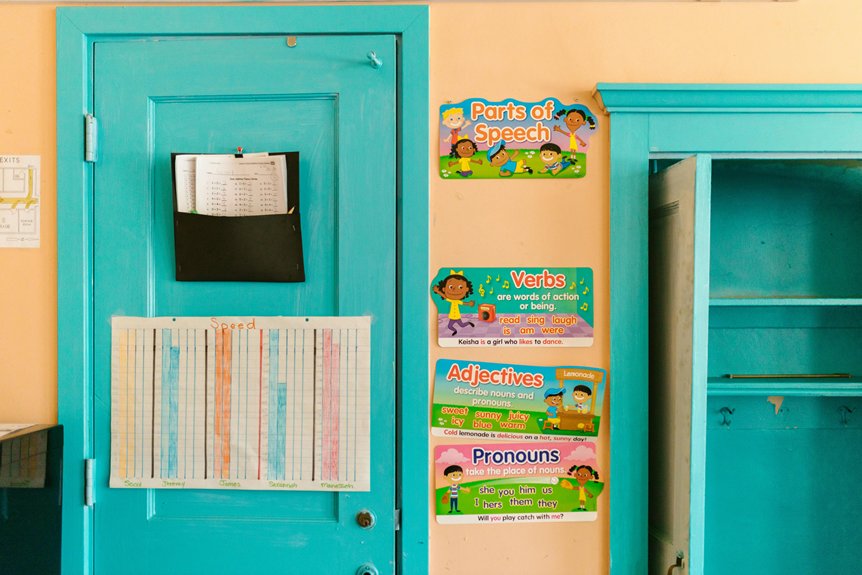
Understanding the distinction between “ser” and “estar” can transform your Spanish communication. You might think both verbs mean “to be,” but they serve different purposes. Knowing when to use each one is essential. For example, expressing something about your identity differs vastly from sharing your current feelings. Curious about how these nuances play out in everyday conversations? Let’s explore some real-life examples that will clarify these important differences.
The Fundamental Differences Between Ser and Estar
When you immerse yourself in Spanish, understanding the fundamental differences between “ser” and “estar” is vital.
“Ser” expresses inherent qualities like identity, origin, and time. For instance, you’d say, “Ella es doctora” to highlight someone’s profession.
On the other hand, “estar” captures temporary states and conditions. When you feel tired, you say, “Estoy cansado.”
This distinction is vital for clear communication. Use “ser” for general truths, like in “Es importante,” and “estar” for specific situations, such as “Está lloviendo.”
By mastering these differences, you’ll create meaningful sentences that reflect the nuances of emotion and identity.
Embrace this freedom in expression, and your Spanish will flourish!
When to Use Ser: Inherent Qualities
Understanding inherent qualities is essential for mastering the use of “ser” in Spanish. “Ser” describes traits that define a person or thing, like saying, “Ella es alta” (She is tall). This indicates a permanent characteristic.
When discussing professions, you’d say, “Él es médico” (He is a doctor), highlighting a core identity. You also use “ser” to express origin or nationality, such as “Nosotros somos españoles” (We are Spanish), showing an unchangeable fact.
It’s key for stating time and dates too, like “Hoy es lunes” (Today is Monday). Finally, “ser” defines relationships and possession; for example, “Ella es mi hermana” (She is my sister), emphasizing that fundamental connection.
Embrace these rules to express yourself confidently in Spanish!
When to Use Estar: States and Conditions
Often, you’ll use “estar” to convey temporary states and conditions that can change over time. This verb captures emotions like “Estoy feliz” (I am happy) and physical states such as “Está cansado” (He is tired).
You’ll also use “estar” to indicate location, whether for objects or people—think “El libro está en la mesa” (The book is on the table).
Additionally, “estar” plays a significant role in progressive tenses, allowing you to express ongoing actions, like “Estoy estudiando” (I am studying).
Real-Life Example: Describing a Person
Describing a person can be straightforward once you grasp the difference between “ser” and “estar.” For instance, if you want to highlight someone’s permanent traits, you’d say “Ella es alta” (She is tall) or “Él es amable” (He is kind).
When you discuss professions or identities, you’d use “ser” too, like “Soy profesor” (I am a teacher).
However, if you want to express temporary traits, like someone’s current mood or state, you’d switch to “estar.” For example, “Ella está feliz” (She is happy) reflects a fleeting emotion.
Recognizing these distinctions in Spanish isn’t just about grammar; it’s about enhancing your ability to truly understand and describe the people around you.
Real-Life Example: Discussing Emotions
Emotions can be complex, and knowing when to use “ser” or “estar” can greatly enhance your expression in Spanish.
When discussing feelings, always remember that “estar” reflects temporary states. For instance, saying “Ella está feliz” means she’s feeling happy right now, while “Ella es feliz” suggests happiness is part of her identity.
This distinction is essential because mixing them up can lead to misunderstandings about whether emotions are fleeting or lasting. So, if you’re excited, say “Estoy emocionado” instead of “Soy emocionado.”
Practice using these distinctions in daily conversations, and you’ll find yourself expressing yourself more authentically. Embrace the freedom to convey your emotions accurately, and watch your Spanish conversations flourish!
Common Scenarios for Using Ser
Understanding when to use “ser” can greatly improve your Spanish communication. You’ll find “ser” essential for describing inherent characteristics, like saying “Ella es alta” (She is tall).
When you want to express origin or nationality, it’s the go-to verb—think “Yo soy de México” (I am from Mexico).
Telling time and dates also calls for “ser”; for example, “Son las tres” (It is three o’clock).
If you’re identifying professions, like “Él es médico” (He is a doctor), you’ll use “ser” as well.
Finally, when constructing passive voice sentences, “ser” is vital, as in “La novela fue escrita por el autor” (The novel was written by the author).
Embrace these scenarios, and your Spanish will flourish!
Common Scenarios for Using Estar
While mastering Spanish, you’ll find that “estar” plays an essential role in conveying temporary states and locations. You use “estar” to describe your feelings or physical conditions, like saying “Estoy cansado” when you’re tired.
It also helps you pinpoint where things are, such as “El libro está en la mesa,” meaning the book is on the table. When you’re engaged in activities, you combine “estar” with gerunds, as in “Estoy estudiando” to express ongoing actions.
Additionally, it’s the go-to for checking in on someone’s health: “¿Cómo estás?” reflects a fleeting state of being. You’ll also encounter idiomatic expressions like “Está lloviendo,” which communicate immediate circumstances.
Embrace these uses to express yourself more freely!
Practice Exercises for Mastery
To truly master the difference between “ser” and “estar,” you’ll want to engage in targeted practice exercises that reinforce their distinct uses.
Start by crafting sentences that highlight inherent traits with “ser,” like “Ella es alta” or professions such as “Yo soy doctor.” Then, switch gears to temporary states and locations using “estar,” for example, “Ella está cansada” and “Estoy en casa.”
Fill in the blanks in exercises based on context clues, and use flashcards to sharpen your recall. Role-playing scenarios can also be a fun way to practice; describe emotions and conditions accurately.
Conclusion
In conclusion, mastering the difference between “ser” and “estar” is key to fluent Spanish communication. Remember, use “ser” for inherent qualities and identity, while “estar” is your go-to for temporary states and emotions. By applying these rules in real-life situations, you’ll express yourself more clearly and accurately. Keep practicing with the examples and exercises, and soon you’ll feel confident steering through the nuances of both verbs in everyday conversations. Happy learning!



